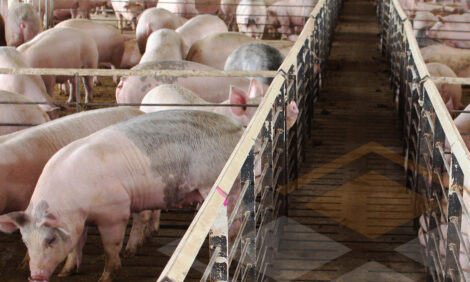



US Pork Outlook - March 2011
US beef exports for 2011 are forecast at 2.43 billion pounds while pork exports, at almost 369 million pounds, were more than 17 per cent higher than a year earlier and broiler and turkey shipments were both up from last year, according to the latest Livestock, Dairy, and Poultry Outlook from the USDA's Economic Research Service.Summary
Pork prices are year-over-year higher, despite increased pork production in January-February. Strong pork and hog prices are most likely largely attributable to increased consumer demand. Despite higher feed costs, estimated average dressed hog weights in January-February were almost five pounds greater than in the same period of 2010. Higher hog and pork prices appear to have at least partially offset higher costs of adding more weight to hogs. January US pork exports, at almost 369 million pounds, were more than 17 per cent higher than a year earlier. The largest foreign destinations in January were Japan, Mexico, South Korea, Canada and China.
Pork Supplies Up, Prices Year-Over-Year Higher
Despite larger pork supplies in January-February, average prices for hogs and wholesale pork were greater than in the same period last year. For the first two months of 2011, estimated commercial hog slaughter was nearly unchanged from a year earlier, and estimated commercial pork production was about three per cent greater than in January-February 2010. However, prices of live equivalent 51 to 52 per cent lean hogs averaged $58.59 for January-February, almost 19 per cent greater than a year ago. Wholesale pork prices, averaged for January and February, were 22 per cent greater than over the same period last year. Such year-over-year price increases accompanying larger supplies can only occur when product demand increases. Among the factors that have likely driven increases in pork demand are higher incomes generated by recovering economies, higher domestic prices of substitute animal proteins – beef and poultry in this case –and a relatively low-valued US dollar exchange rate that mitigates higher US pork prices for foreign consumers. As a result, hog and pork markets equilibrate at higher price levels, much to the benefit of the US pork sector.
Hog Weights Jump Despite Higher Feed Costs
Higher estimated average dressed hog weights in January-February were largely responsible for the increase in pork production. As noted above, January-February estimated commercial hog slaughter was about unchanged compared with the same period last year, while estimated commercial pork production was more than three per cent greater than a year earlier. The estimated average dressed weight for January-February 2011 was almost five pounds greater than a year ago, providing a healthy kick to pork production in the first two months of 2011. What is unusual is that significantly higher average dressed weights are coming at a time when the cost of adding another pound to a hog has increased dramatically, due to higher corn and soybean meal prices. So far in 2011, however, the higher prices of hogs and pork, which increased domestic and foreign demand are largely responsible for generating, appear to be more than offsetting the costs of feeding hogs to higher weights.
First-quarter commercial pork production is forecast at almost 5.7 billion pounds, 1.5 per cent above the same period last year. Second-quarter production is expected to be 5.35 billion pounds, slightly less than one per cent above a year earlier. Prices for live equivalent 51 to 52 per cent lean hogs are expected to average $58 and $59 per cwt in the first quarter and $62 and $66 in the second quarter. USDA will release the Quarterly Hogs and Pigs report on Friday
(25 March 2001) click here.
Pork Exports Begin 2011 on a Strong Note
US exporters shipped almost 369 million pounds of pork in January, a quantity more than 17 per cent higher than a year ago. The largest foreign buyers in January were Japan (23 per cent above the previous year), Mexico (down less than one per cent), South Korea (144 per cent higher), Canada (down almost five per cent) and China. US exports to China increased to almost 26 million pounds in January, from less than one million pounds a year earlier.
Exports in 2011 are expected to be 4.675 billion pounds, almost 11 per cent higher than in 2010. Exports will likely account for almost 21 per cent of US commercial pork production this year, compared with almost 19 per cent last year and about 14 per cent five years ago.
Pork imports were almost 64 million pounds in January, about the same as in January 2010. As is typical, more than three-quarters of US pork imports (79 per cent) came from Canada. Denmark accounted for nine per cent in January, while the next largest originating country was Mexico, which accounted for four per cent of January imports. Imports are expected to be 920 million pounds this year, slightly more than seven per cent higher than last year.
Imports of live swine were almost 482 million head in January, 3.6 per cent lower than a year ago. All categories of swine imports were lower, except that of animals weighing less than 7kg, which was more than seven per cent greater than last year. Strong US hog prices are the most likely factor drawing Canadian early-weaned animals into the United States. The average January prices for 10 pound basis early-weaned animals (NW_LS255 National Direct Delivered Feeder Pig Report) was $51.54 per head, almost 20 per cent higher than in January 2010.
Further Reading
| - | You can view the full report by clicking here. |
March 2011






